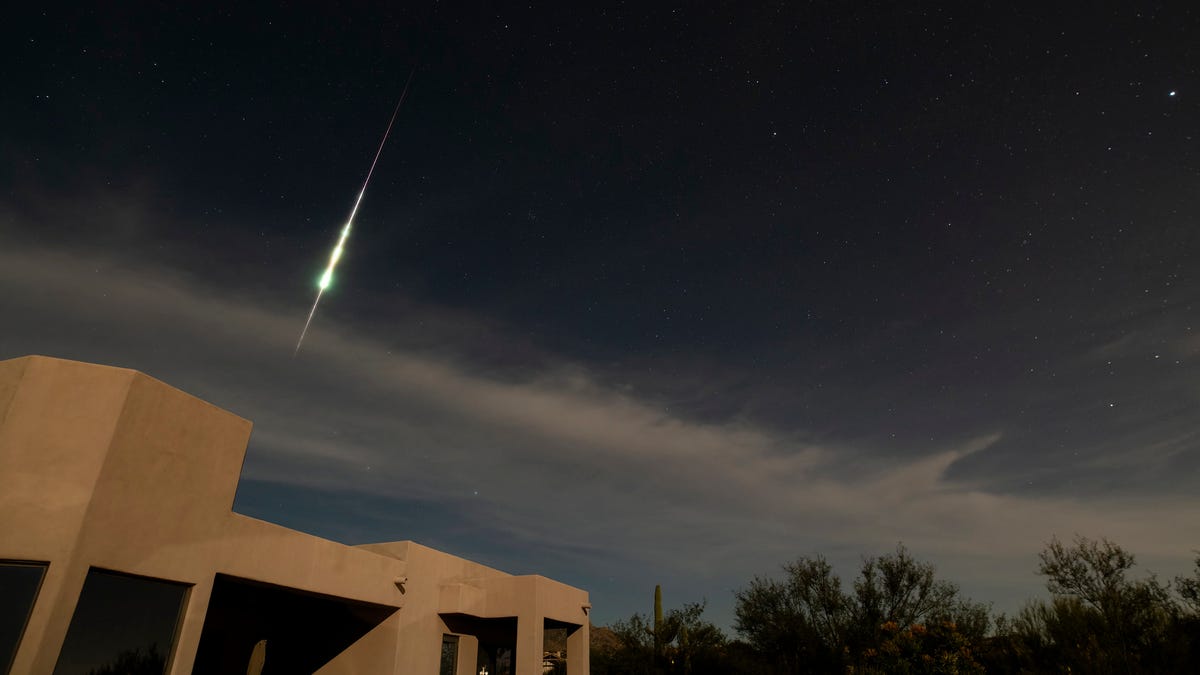#How to see Taurid fireball stream peak

Table of Contents
November is when the meteors produced by both branches of the Taurid meteor stream will be most active, beginning in this weekend with the Southern Taurids.

The Taurid meteor stream, known for bright fireballs, offers a chance for stargazers to catch a glimpse every autumn.
A meteor shower known for its cascade of bright fireballs is set to peak in activity during the next few days, offering an ideal opportunity for stargazers to catch a glimpse of its mesmerizing display.
Both the Northern and Southern Taurid meteor streams become visible for several weeks of the year each fall as Earth passes through a stream of debris left by Comet Encke. November is when the meteors produced by both branches of the Taurid meteor stream will be most active, beginning this weekend with the Southern Taurids.
Here’s what to know about the Southern Taurid meteor shower and its upcoming peak.
‘Not to be missed’: ‘Devil comet’ may be visible to naked eye in April. Here’s how to see it.
When can you see the Southern Taurid meteor shower?
Taurid meteors can be seen when the constellation Taurus is above the horizon between September and November, according to NASA.
Lasting for weeks, the Taurid meteor streams tend to be slow moving with higher visibility compared to other meteor showers like Orion and Perseid.
Even at their peak, neither the Southern nor Northern branches of the Taurid meteor stream are particularly frequent, producing only about five meteors an hour. But the meteors they do produce are famously big and bright, leading to an increase in fireball activity when they’re active at the same time, according to the American Meteorological Society.
While the Southern Taurids are active between Sept. 23 and Dec. 8, astronomers anticipate that the celestial light show will be most visible Sunday and Monday.
The Northern Taurids, which are active between Oct. 13 and Dec. 2, will then peak around Nov. 11 and Nov. 12.
Ancient radio burst: A radio burst that traveled 8 billion years to reach Earth is the farthest ever detected

Taurid meteor shower light up the night sky with fireballs
One of the most fiery meteor showers of the year is putting on a sizzling spectacle with fireballs lighting up the sky.
Buzz60
How to watch the Taurid meteor shower
The Taurids, which come from the approximate direction of the Taurus constellation, are visible practically anywhere on Earth with the exception of the South Pole.
The best time of day to see the activity tends to be after midnight and before dawn. That’s when the moon won’t interfere with the display and the Taurus constellation, which is the shower’s radiant point from where it originates, is high in the sky, according to Earth Sky, a website devoted to astronomy and Earth sciences.
Located northeast of the Orion constellation, Taurus can be identified by finding the bright red star known as Aldebaran and the star cluster Pleiades. And as long as stargazers are in a dark location, equipment like telescopes and binoculars shouldn’t be necessary to glimpse the celestial light show.
“Hunting for meteors, like the rest of astronomy, is a waiting game, so it’s best to bring a comfy chair to sit on and to wrap up warm as you could be outside for a while,” according to Royal Museums Greenwich (RMG).
Study: Asteroid known as Polyhymnia may contain ‘superheavy’ elements unknown to humans
What causes the Taurid meteor shower?
Commonly called shooting stars, meteors are generated when debris enters and burns up in Earth’s atmosphere. The resulting meteor showers occur when Earth travels through a cloud of comet debris.
Astronomers believe the meteors produced by both Taurid streams are debris left behind by Encke’s comet.
While Encke’s comet was discovered in 1786 by French astronomer Pierre F. A. Mechain, the comet was named after German astronomer Johann Franz Encke who calculated its orbit, according to NASA.
Thought by some astronomers to be a piece of a larger comet that broke up tens of thousands of years ago, Encke has the shortest orbital period of any known comet within the solar system, taking 3.3 years to orbit the sun.
Each time comet Encke returns to the inner solar system, its comparatively small nucleus sheds ice and rock into space to create a vast debris stream.
The debris stream is dispersed across such a large swatch of space that it takes Earth a lengthy time to pass through it. That’s why we see two segments of the same debris cloud, according to RMG: the Northern Taurids and the Southern Taurids.
Eric Lagatta covers breaking and trending news for USA TODAY. Reach him at [email protected]
If you liked the article, do not forget to share it with your friends. Follow us on Google News too, click on the star and choose us from your favorites.
For forums sites go to Forum.BuradaBiliyorum.Com
If you want to read more News articles, you can visit our News category.




